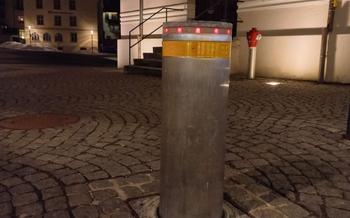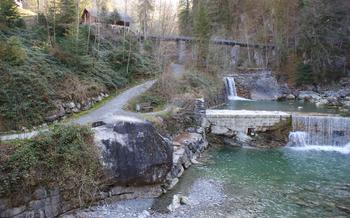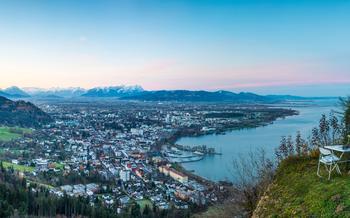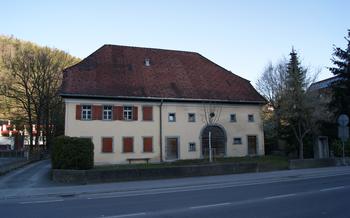
Julius Silverer Alpine Garden
- The Julius Silverer Alpine Garden: A Stunning Plant Paradise
- Plan Your Visit: Essential Information
- Explore the Thematic Gardens: A Journey Through Alpine Habitats
- Discover the Alpine Plant Collection: A Showcase of Diversity
- Learn About Alpine Plant Adaptations: Surviving in Extreme Environments
- Engage in Educational Programs: Unveiling the Secrets of Alpine Plants
- Immerse Yourself in the Beauty of Nature: A Sensory Experience
- Capture the Essence of the Alps: Photography and Art Inspiration
- Shop for Alpine Plant Souvenirs: A Piece of Nature to Take Home
- Stay Overnight and Extend Your Alpine Adventure
- Explore the Region: Discovering the Charms of Feldkirch and Beyond
- Practical Tips for Visitors: Ensuring a Hassle-Free Experience
- Accessibility and Special Needs: Ensuring an Inclusive Experience
- Insider Tip: Uncrowded Serenity
The Julius Silverer Alpine Garden: A Stunning Plant Paradise
Nestled amidst the breathtaking landscapes of Vorarlberg, Austria, the Julius Silverer Alpine Garden is a horticultural haven that celebrates the beauty and diversity of alpine flora. Established in 1963 by Julius Silverer, a passionate botanist and conservationist, this unique garden showcases an extraordinary collection of alpine plants from around the world.
With its stunning location at the foot of the majestic Rätikon Mountains, the garden offers unparalleled views of the surrounding peaks and valleys. Visitors are greeted by a kaleidoscope of colors and textures as they embark on a journey through this alpine paradise. The garden's diverse collection includes over 4,000 species and varieties of alpine plants, representing a wide array of habitats and ecosystems.
The Julius Silverer Alpine Garden is more than just a showcase of botanical wonders; it is also a vital center for conservation and education. Dedicated to preserving the delicate alpine flora, the garden plays a crucial role in protecting and propagating threatened species. Educational programs and workshops are organized throughout the year to promote awareness and inspire a love for these remarkable plants.
Whether you are a seasoned botanist, a nature enthusiast, or simply seeking a tranquil escape, the Julius Silverer Alpine Garden offers an unforgettable experience. As you wander through its thematic gardens, discover the secrets of alpine plant adaptations, and immerse yourself in the beauty of nature, you will gain a newfound appreciation for the wonders of the alpine world.
Plan Your Visit: Essential Information
Opening Hours and Admission Fees:
- The Julius Silverer Alpine Garden welcomes visitors during the summer season, typically from May to October, and is closed during the winter months.
- Opening hours vary depending on the time of year, generally from 9 am to 6 pm.
- Admission fees are applicable, with discounted rates for students, seniors, and groups.
- Check the garden's official website or contact them directly for the most up-to-date information on opening hours and admission fees.
Guided Tours and Self-Guided Exploration:
- Guided tours are available for visitors who wish to learn more about the alpine plants and the garden's history.
- Tours are led by knowledgeable guides and can be arranged in advance or upon arrival.
- Self-guided exploration is also an option, with detailed maps and information boards provided throughout the garden.
Accessibility for Visitors with Disabilities:
- The garden is committed to ensuring accessibility for visitors with disabilities.
- Wheelchair-accessible paths and facilities are available, allowing visitors to navigate the garden with ease.
- Special needs restrooms and designated parking spaces are also provided.
- Assistance and support are available for visitors with disabilities, ensuring a comfortable and enjoyable visit.
Best Time to Visit:
- The best time to visit the Julius Silverer Alpine Garden is during the summer months, typically from June to August, when the alpine plants are in full bloom.
- During this period, visitors can experience the garden at its peak beauty, with vibrant colors and a diverse array of flowers.
- However, the garden offers a unique experience throughout the year, with changing landscapes and seasonal highlights.
- Consider visiting in the spring to witness the emergence of new growth and early blooms, or in the autumn to see the vibrant foliage and berries.
Explore the Thematic Gardens: A Journey Through Alpine Habitats
The Julius Silverer Alpine Garden is not just a collection of plants; it's a journey through different alpine habitats, each with its unique charm and characteristics. Specialized gardens showcase the diverse ecosystems found in the Alps, offering visitors an immersive experience of these rugged landscapes.
Stroll through the rocky alpine garden, where hardy plants cling to life in harsh conditions. Admire the adaptations that allow these plants to withstand extreme temperatures, strong winds, and limited water.
In the woodland garden, find respite from the sun under the shade of trees. Discover the delicate flowers and lush foliage that thrive in this serene environment.
The water garden is a vibrant oasis, showcasing aquatic plants and wetland ecosystems. Observe the intricate interactions between plants, insects, and amphibians that make up this vital habitat.
Immerse yourself in the beauty and diversity of alpine habitats, each telling its own story of survival and resilience.
Discover the Alpine Plant Collection: A Showcase of Diversity
The Julius Silverer Alpine Garden boasts a diverse collection of alpine plants from various regions around the globe. These plants thrive in the unique microclimates created by the garden's varying terrain and elevations. Wander through the thematic gardens and marvel at the vivid colors, delicate foliage, and remarkable adaptations of these alpine wonders.
Labeling and information signs accompany each plant, providing insights into their origins, growth habits, and ecological significance. Take your time to admire the intricate beauty of the flowers, the lush foliage, and the fascinating survival mechanisms of these plants. Capture the essence of the Alps through photography, capturing the vibrant hues and textures that make each plant a unique masterpiece.
Learn About Alpine Plant Adaptations: Surviving in Extreme Environments
Alpine plants have evolved remarkable adaptations to thrive in the harsh conditions of the high mountains. They have developed strategies to cope with extreme temperatures, strong winds, limited water availability, and the challenges of snow cover, avalanches, and erosion.
One of the most striking adaptations is their ability to withstand extreme temperatures. Alpine plants can survive freezing temperatures and wide fluctuations in temperature between day and night. They have specialized root systems that anchor them firmly in the ground and protect them from frost heaving. Their leaves are often small and waxy, reducing water loss and protecting them from strong winds. Some plants have dense hairs or scales that insulate them from the cold.
To cope with limited water availability, alpine plants have developed efficient root systems that can extract water from deep in the soil or from melting snow. Their leaves are often thick and leathery, reducing water loss through transpiration. Some plants can even store water in their leaves or stems to survive dry spells.
Alpine plants have also adapted to the challenges of snow cover and avalanches. Many species have flexible stems that can bend and sway in the wind, preventing them from being snapped by heavy snow or ice. Others have evolved a low, compact growth form that helps them to withstand the weight of snow. Some plants produce seeds that can germinate even after being buried under snow for months.
The adaptations of alpine plants are a testament to the incredible diversity and resilience of life. These plants have evolved unique strategies to survive in one of the most challenging environments on Earth, demonstrating the power of nature to adapt and thrive even in the harshest conditions.
Engage in Educational Programs: Unveiling the Secrets of Alpine Plants
The Julius Silverer Alpine Garden offers a range of educational programs designed to deepen visitors' understanding of alpine plants and their unique adaptations. Led by experienced botanists and educators, these programs provide hands-on learning experiences and interactive exhibits that make learning about alpine plants both enjoyable and informative.
Whether you're a seasoned plant enthusiast or simply curious about the natural world, these programs offer something for everyone. Workshops, lectures, and guided tours provide in-depth insights into the fascinating world of alpine plants, their adaptations, and their role in the ecosystem.
Interactive exhibits and displays bring the science of alpine plants to life, allowing visitors to explore the intricate relationships between plants, their environment, and the animals that depend on them.
Educational programs at the Julius Silverer Alpine Garden cater to all ages and interests, from curious children to passionate plant enthusiasts. They offer a unique opportunity to learn about the diverse and resilient world of alpine plants and their significance in the delicate balance of nature.
Immerse Yourself in the Beauty of Nature: A Sensory Experience
The Julius Silverer Alpine Garden is not just a place to admire plants; it's an immersive experience that engages all your senses. The breathtaking views of the surrounding mountains and valleys, the tranquil atmosphere, and the serene ambiance of the garden create a truly magical setting.
As you stroll through the garden, the fragrant flowers, gentle breezes, and the sounds of nature create a symphony of sensory delights. The vibrant colors of the alpine plants, the delicate textures of the leaves, and the sweet scent of the blossoms transport you to a world of natural beauty.
The garden offers a place to relax, rejuvenate, and connect with the natural world. Find a quiet spot to sit and simply soak in the beauty of your surroundings. Let the tranquility of the garden wash away your worries and stresses as you immerse yourself in the beauty of nature.
Capture the Essence of the Alps: Photography and Art Inspiration
The Julius Silverer Alpine Garden is a photographer's paradise, offering endless opportunities to capture the beauty of the alpine landscape, its diverse plant life, and the surrounding mountains. Whether you're an amateur enthusiast or a seasoned professional, the garden provides a stunning backdrop for your creative pursuits.
With its vibrant colors, intricate patterns, and dramatic vistas, the garden is a feast for the eyes. Capture the delicate petals of alpine flowers, the rugged textures of mountain rocks, and the sweeping panoramas of the Alps. The play of light and shadow throughout the day creates ever-changing compositions, ensuring that each visit offers unique photo opportunities.
For those who prefer to express their creativity through painting or sketching, the garden provides the perfect setting for plein air art. Set up your easel amidst the colorful blooms, capture the majesty of the mountains, or find inspiration in the tranquil ambiance of the woodland garden. The garden's serene atmosphere and natural beauty will spark your creativity and allow you to create stunning artworks that encapsulate the essence of the Alps.
Workshops and classes are also available for aspiring artists and photographers, providing guidance and inspiration from experienced professionals. Learn the techniques of landscape photography, master the art of capturing the delicate details of alpine plants, or develop your skills in plein air painting. These workshops offer a unique opportunity to hone your craft while immersing yourself in the beauty of the garden.
Whether you choose to capture the essence of the Alps through photography or art, the Julius Silverer Alpine Garden provides an inspiring and picturesque setting that will ignite your creativity and leave you with lasting memories.
Shop for Alpine Plant Souvenirs: A Piece of Nature to Take Home
At the Julius Silverer Alpine Garden, you not only get to admire the beauty of alpine plants, but you also have the chance to take a piece of nature home with you. A specialized nursery within the garden offers a variety of alpine plants for purchase, allowing you to cultivate your own alpine oasis. Choose from a diverse selection of hardy and resilient plants that have adapted to thrive in challenging mountain environments.
Whether you're a seasoned gardener or a beginner, the knowledgeable staff at the nursery is always ready to provide expert advice on plant care and cultivation. Learn about the specific needs of each plant, such as soil conditions, watering requirements, and sunlight exposure, to ensure their success in your home garden.
In addition to plants, the nursery also offers a range of souvenirs and gifts related to alpine plants and gardening. Discover books and guides to deepen your botanical knowledge, or choose from a selection of unique souvenirs that capture the essence of the Alps. From postcards and magnets featuring stunning photographs of alpine landscapes to hand-crafted pottery adorned with delicate alpine motifs, there's something for every taste.
Whether you're looking to expand your alpine plant collection or simply want to cherish a lasting memory of your visit to the Julius Silverer Alpine Garden, the nursery offers an array of treasures to take home.
Stay Overnight and Extend Your Alpine Adventure
The Julius Silverer Alpine Garden offers visitors an immersive experience that can be extended through an overnight stay in Feldkirch or the surrounding area. Several hotels, guesthouses, and vacation rentals provide comfortable accommodations within walking distance or a short drive from the garden. For those seeking a longer alpine adventure, multi-day itineraries can be tailored to explore the region's diverse attractions. Hiking, biking, and other outdoor activities are readily available to complement your garden visit, showcasing the stunning natural beauty of the Vorarlberg Alps.
Explore the Region: Discovering the Charms of Feldkirch and Beyond
Beyond the captivating allure of the Julius Silverer Alpine Garden, the region beckons with an array of enticing attractions. Delve into the heart of Feldkirch, a historic Old Town that exudes medieval charm. Wander through its cobbled streets, marveling at the intricate architecture that whispers tales of a bygone era. Ascend to the Schattenburg Castle, a majestic symbol of Vorarlberg's rich history, and immerse yourself in its captivating exhibits and panoramic vistas.
Venture further afield to discover the region's hidden gems. Museums and art galleries showcase the cultural heritage and artistic prowess of the area. Immerse yourself in the vibrant calendar of events, from traditional festivals to contemporary performances, that celebrate the region's unique character. Whether you seek adventure or tranquility, the surrounding landscape offers a plethora of opportunities for exploration and relaxation. Embark on invigorating hikes through pristine alpine trails, or pedal along scenic bike paths that wind through picturesque valleys. Unwind amidst the tranquility of crystal-clear lakes, or let the gentle currents of a river guide you on a kayaking excursion.
As you journey through the region, savor the opportunity to sample local delicacies that reflect the region's culinary traditions. Indulge in hearty Vorarlberg specialties, accompanied by a glass of locally produced wine, and experience the warmth of Austrian hospitality firsthand. Whether you seek cultural immersion, outdoor adventures, or culinary delights, the region surrounding the Julius Silverer Alpine Garden promises an unforgettable tapestry of experiences.
Practical Tips for Visitors: Ensuring a Hassle-Free Experience
To ensure a pleasant and hassle-free visit to Julius Silverer Alpine Garden, heed these practical tips:
-
Dress Appropriately: The mountain climate can be unpredictable, so dress in layers to adapt to changing temperatures. Wear comfortable shoes suitable for walking on uneven surfaces and rocky paths.
-
Essential Items: Pack a camera to capture the garden's beauty, binoculars to observe wildlife, and a notepad to jot down your observations.
-
Respect the Rules: Observe the garden's rules and regulations, such as staying on designated paths, not picking flowers, and respecting the wildlife.
-
Safety First: Be cautious of uneven surfaces, potential trip hazards, and the presence of wildlife. Always supervise children and keep them close by.
-
Stay Hydrated: Bring sufficient water, especially on hot days, as there are limited water fountains within the garden.
-
Picnics Welcome: Enjoy a picnic in the designated areas, but please dispose of your waste responsibly.
-
Respect the Plants: Refrain from touching or disturbing the plants to preserve their natural beauty and health.
-
Photography Etiquette: Respect the privacy of other visitors and avoid taking intrusive photographs, especially of children.
-
Leave No Trace: Help preserve the garden's pristine condition by leaving no litter behind.
-
Limited Parking: Parking spaces near the garden are limited, so consider alternative transportation options such as public transport or walking.
-
Check the Weather: Before your visit, check the local weather forecast and be prepared for sudden changes in conditions.
By following these practical tips, you can contribute to the preservation of this natural paradise while enjoying a memorable and enriching visit.
Accessibility and Special Needs: Ensuring an Inclusive Experience
The Julius Silverer Alpine Garden is committed to providing an inclusive and accessible environment for all visitors. Wheelchair-accessible paths and facilities ensure that individuals with disabilities can comfortably navigate the garden's grounds. Guided tours and educational programs are tailored to meet the needs of visitors with special requirements, offering alternative formats and support to enhance their understanding and enjoyment of the alpine flora. The garden's dedicated staff is always willing to assist visitors with special needs, providing guidance and support to ensure a hassle-free and fulfilling experience. With these thoughtful considerations, the Julius Silverer Alpine Garden creates a welcoming space where everyone can immerse themselves in the wonders of alpine plant life, regardless of their abilities.
Insider Tip: Uncrowded Serenity
To fully appreciate the tranquility and beauty of the Julius Silverer Alpine Garden, consider visiting outside of the peak tourist season, which typically falls in July and August. During these months, the garden can be bustling with visitors, which may detract from the serene atmosphere that makes it so special.
Instead, opt for a visit in the shoulder seasons (May-June and September-October) when the weather is still pleasant but the crowds are thinner. This will allow you to wander through the garden at your own pace, soak in the breathtaking views, and truly connect with the alpine flora without distractions.
For an even more secluded experience, plan your visit for early in the morning or late in the afternoon when the garden is typically quieter. These times of day offer a magical ambiance as the sun casts long shadows across the landscape, creating a sense of peace and tranquility.
Finally, don't be afraid to explore the garden's lesser-known corners. While the main paths are undoubtedly beautiful, venturing off the beaten track often leads to hidden gems and secluded spots where you can enjoy the garden's beauty in solitude.









